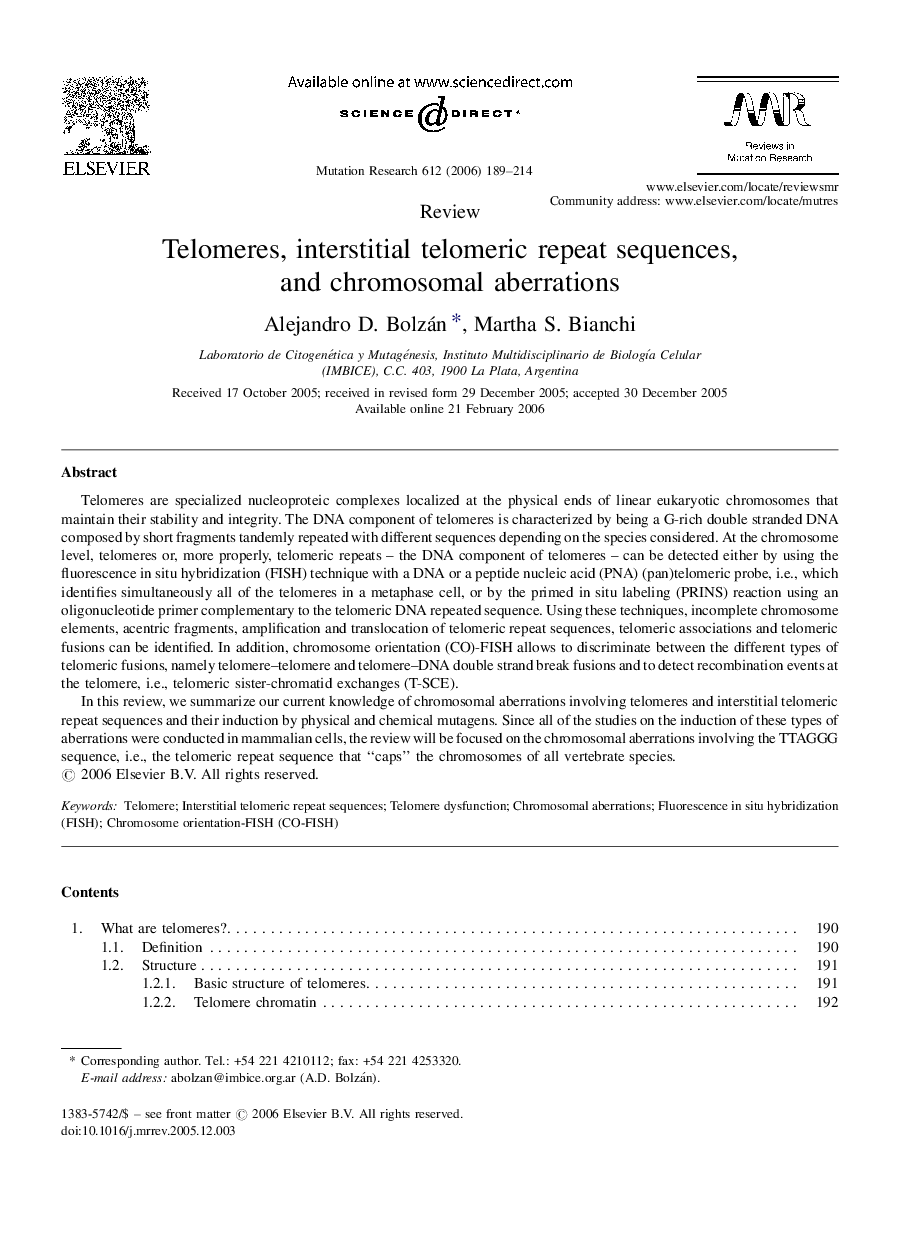| Article ID | Journal | Published Year | Pages | File Type |
|---|---|---|---|---|
| 2149765 | Mutation Research/Reviews in Mutation Research | 2006 | 26 Pages |
Telomeres are specialized nucleoproteic complexes localized at the physical ends of linear eukaryotic chromosomes that maintain their stability and integrity. The DNA component of telomeres is characterized by being a G-rich double stranded DNA composed by short fragments tandemly repeated with different sequences depending on the species considered. At the chromosome level, telomeres or, more properly, telomeric repeats – the DNA component of telomeres – can be detected either by using the fluorescence in situ hybridization (FISH) technique with a DNA or a peptide nucleic acid (PNA) (pan)telomeric probe, i.e., which identifies simultaneously all of the telomeres in a metaphase cell, or by the primed in situ labeling (PRINS) reaction using an oligonucleotide primer complementary to the telomeric DNA repeated sequence. Using these techniques, incomplete chromosome elements, acentric fragments, amplification and translocation of telomeric repeat sequences, telomeric associations and telomeric fusions can be identified. In addition, chromosome orientation (CO)-FISH allows to discriminate between the different types of telomeric fusions, namely telomere–telomere and telomere–DNA double strand break fusions and to detect recombination events at the telomere, i.e., telomeric sister-chromatid exchanges (T-SCE).In this review, we summarize our current knowledge of chromosomal aberrations involving telomeres and interstitial telomeric repeat sequences and their induction by physical and chemical mutagens. Since all of the studies on the induction of these types of aberrations were conducted in mammalian cells, the review will be focused on the chromosomal aberrations involving the TTAGGG sequence, i.e., the telomeric repeat sequence that “caps” the chromosomes of all vertebrate species.
